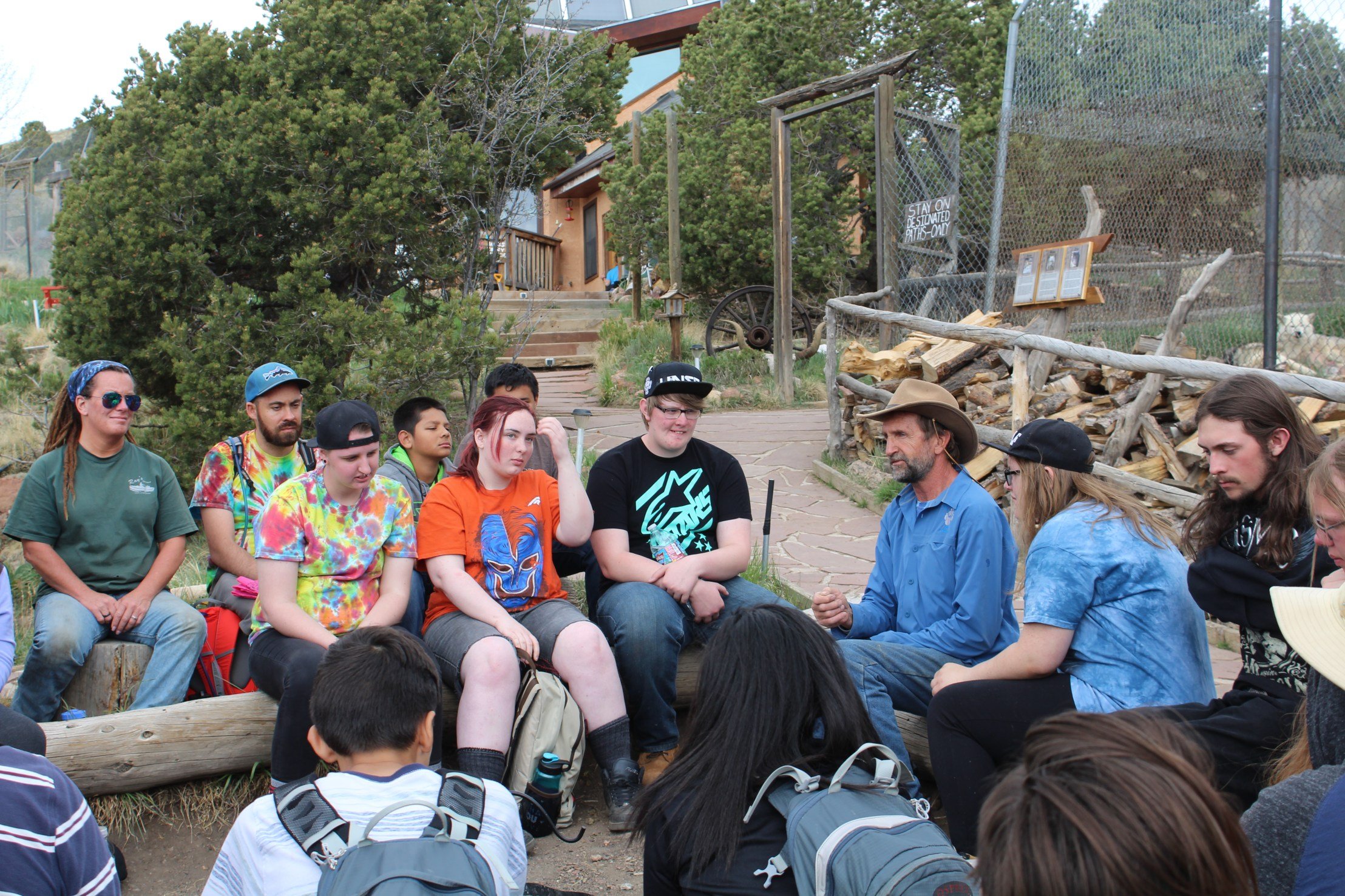Day Visits
Day Visits
Below you can sign up for an educational experience at Mission:Wolf. During the guided visit, you will have the chance to spot some of the wolves and wolf-dogs who call the sanctuary home while learning about wolf behavior, biology, ecology, the stories of the wolves, and the systems in place to survive and thrive on solar power at 9,300ft.
These guided experiences are offered at no charge. A Mission: Wolf staff member will offer info about the best ways you can support the wolves, of which there are many. The most common ways are to donate, become a Wolf Caretaker, or volunteer time on a project.
or scroll to Calendar on bottom..
Day Visit Details
When you arrive: Please park by the first building you see—a big gray building (Jane's Studio) at the bottom of the big hill. A Mission: Wolf staff member will be there to greet you.
Food and Items: Bring a lunch or snack and any other supplies you may need. Mission: Wolf is 45 minutes from the closest town. Make sure your vehicle has enough gas in it to make the drive home after your visit.
Dogs: The wolves are often made anxious by the presence of dogs, especially if they are vocal. A bark to a wolf is an alarm bell, meaning a threat like a bear or mountain lion is close. If your dog cannot stay at home, the only area dogs are allowed is in the Jane’s Studio parking lot and always on a leash. It is best not to bring your dog to the sanctuary.
Volunteering: Mission:Wolf’s volunteer program started with individuals visiting the sanctuary then lending a hand after their tour. Even an hour or two of your time can go a long way toward helping the wolves. Whatever skills you have, they can be beneficial to the sanctuary. Read more about volunteering here.
Wolf Behavioral Session: An eye-to-eye interaction with a wolf is a hallmark of Mission: Wolf’s educationanal program. However, a “wolf visit” or "behavior session” cannot be guaranteed. We try to offer the opportunity to everyone who visits the sanctuary — provided the wolves, the weather, and ongoing projects allow.
Directions: DO NOT rely on Google Maps or a GPS. The sanctuary is in a remote location with unreliable cell service. If you make a wrong turn and find yourself without connection, you will get lost. Click here for the simplest, most accurate directions.
Children: Children are welcome to visit Mission:Wolf. However, a minimum age of 8 years old is strongly recommended. The wolves see children as puppies and want to play with them — when they can’t, they often get frustrated and anxious. This goes against the goal of animal sanctuary. Because younger children are likely to cause this, you may be restricted to certain areas of the sanctuary while on-site.
Camping: There are primitive campsites (for tent or car camping) available free of charge — donations are encouraged and appreciated. Please read about camping overnight before planning your volunteer trip.
Surrounding Area: It’s easy to incorporate other destinations into your visit to Mission:Wolf. Click here for more info about the surrounding area.
Winter Conditions: November through May, the road into the sanctuary is frequently impassable with snow drifts or slippery mud. There is limited cell phone coverage on the final 13 miles of dirt road. You must take seriously that the drive is through the Rocky Mountains at over 8,000 feet of elevation. Especially in the winter months, we strongly recommend you drive vehicle with 4WD or AWD, bring tire chains, a shovel, and enough clothing and food to survive a night in your vehicle if you get stuck without the ability to reach help.
Weather: The sanctuary is located just over 9,300 feet above sea level. Mountain weather is unpredictable and change quickly. No matter the season, be prepared for any type of weather. In general, summer days are hot and sunny with afternoon thunderstorms, but chilly in the mornings and evenings. Fall and spring can bring a mix of cold or warm days with colder nights. At this elevation, it is not uncommon to experience all four seasons in the span of a few hours. The first snow typically falls in early October, and the majority of snow falls in March and April. Winter is most often sunny but can be extremely cold with temperatures and wind chill well below 0 degrees F. Wind can be extreme leading to low visibility and large snowdrifts blocking the roads. To check the local weather forecast before your visit, click here.
Book a Visit Here:
Having trouble? Try this link here.
